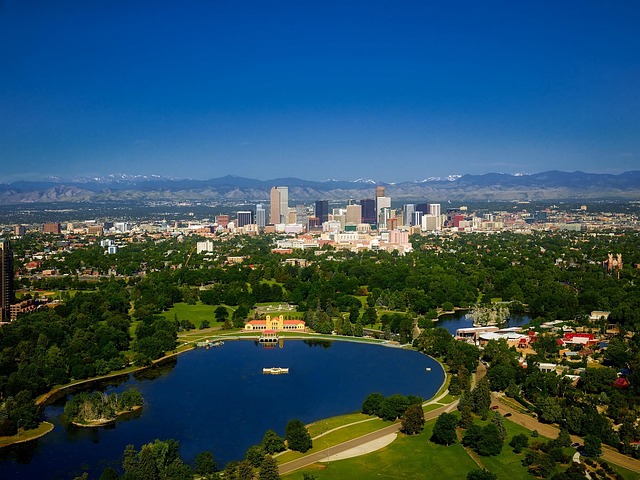Asbestos removal in Denver is strictly regulated due to its health risks, with certified professionals adhering to strict protocols involving containment, disposal, and cleanup. Proper personal protective equipment (PPE), air quality monitoring, and safe removal practices are mandated. Testing by experts confirms asbestos presence, while advanced techniques ensure accurate identification. Strict regulations guide the process, from initial inspections to final disposal at designated hazardous waste facilities. Post-removal, proper ventilation with HEPA filters and a post-inspection by a certified professional ensure a safe home environment in Denver.
Denver residents often find themselves facing the challenge of asbestos removal, a process that requires expert knowledge and strict adherence to regulations. This guide delves into the crucial aspects of handling asbestos in Denver, including understanding its risks, identifying it in your property, and following safe removal processes. From navigating local regulations to ensuring a healthy home post-removal, this article provides essential insights for those embarking on asbestos mitigation in the Denver landscape.
- Understanding Asbestos: Risks and Regulations in Denver
- Identifying Asbestos in Your Denver Property
- The Process of Safe Asbestos Removal in Denver
- Post-Removal Steps and Ensuring a Healthy Denver Home
Understanding Asbestos: Risks and Regulations in Denver

Asbestos, a once-prevalent building material known for its fire resistance and insulation properties, poses significant health risks when disturbed or removed improperly. In Denver, as in many places, the handling and removal of asbestos are strictly regulated to protect residents and workers from these dangers. The primary risk associated with asbestos is mesothelioma, a rare but aggressive form of lung cancer often linked to past exposure.
Denver’s regulations for asbestos removal, like those in other cities, mandate specific procedures and certifications for professionals engaged in this work. Asbestos Removal Denver specialists must follow strict protocols for containment, disposal, and cleanup to ensure the safety of everyone involved. These regulations cover a range of aspects, including proper personal protective equipment (PPE), air quality monitoring, and adherence to safe removal practices, all designed to minimize the release of asbestos fibers into the environment.
Identifying Asbestos in Your Denver Property

If you suspect there’s asbestos in your Denver property, the first step is to confirm its presence through proper testing. Asbestos removal in Denver should only be handled by licensed professionals since it poses significant health risks. They use advanced techniques and tools to sample materials, such as insulation, flooring, or roofing, and send them to a lab for analysis.
Visual inspection isn’t always enough to identify asbestos, especially for older homes. Professional inspectors look for telltale signs like a dusty, brittle texture, patterns of damage, or the presence of tape or adhesive. Once confirmed, a comprehensive plan for safe removal and disposal is essential. Contacting reliable asbestos removal services in Denver ensures your property is handled with care while mitigating potential dangers to you and your family.
The Process of Safe Asbestos Removal in Denver

Asbestos removal in Denver involves a meticulous and regulated process designed to ensure the safety of residents and workers. The first step is an extensive inspection by certified professionals who identify asbestos-containing materials (ACM) in homes, offices, or industrial settings. They use specialized tools and testing kits to confirm the presence and type of asbestos, as different types require specific removal techniques.
Once ACM is located, trained technicians employ various methods suitable for the particular situation. This can include wet cutting, encapsulation, or abatement to safely remove the hazardous material without releasing harmful fibers into the air. Strict protocols are followed to contain and dispose of the asbestos properly, adhering to Denver’s health and safety regulations. Regular air quality testing ensures that the environment is clear of asbestos particles after completion of the removal process.
Post-Removal Steps and Ensuring a Healthy Denver Home

After a successful asbestos removal process in Denver, several important steps must be taken to ensure a healthy home environment. The first step is proper ventilation. All areas where asbestos was removed should be thoroughly ventilated to prevent any remaining fibers from building up and causing potential health issues. This can be achieved by using high-efficiency particulate air (HEPA) filters and ensuring all windows and doors are open during and after the removal process.
Additionally, it’s crucial to properly dispose of all asbestos materials according to local regulations. Asbestos waste cannot be disposed of in regular trash; it must be taken to designated hazardous waste facilities. To further safeguard your home, consider having a post-removal inspection done by a certified professional. This expert can verify that all asbestos has been removed safely and effectively, ensuring peace of mind for you and your family.
When it comes to asbestos removal in Denver, understanding the risks, knowing how to identify the material, and following safe removal processes are paramount. With the right expertise and adherence to local regulations, residents can ensure a healthier, safer home environment. Remember, proper post-removal steps are crucial to prevent any potential health hazards associated with asbestos exposure. For expert assistance with asbestos removal in Denver, connect with trusted professionals who specialize in this critical service.
